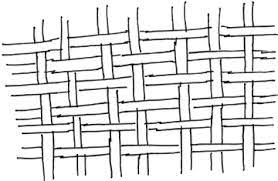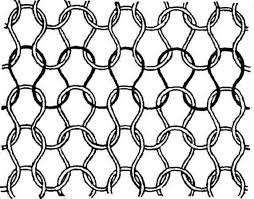TIPS FOR BUYING FABRIC
- Susann Werner

- Dec 29, 2022
- 4 min read
Updated: Jan 29, 2023
How to chose the right fabric and what to consider before buying

In most stores there is such a large selection of fabrics that every decision feels like a mass murder of possibilities or you do not even not where to start looking for the right fabric. With a few things to consider when selecting fabrics and a little knowledge about the basics of fabric, you can usually narrow down your choice of fabric quite well and then get inspired by the range and colors of fabrics on offer.
BASICS OF FABRIC
What´s the difference in all these fabrics?
Apart from the wide variety of colors and patterns, fashion fabrics can roughly be divided into 2 categories:
Wovens (right-angled crossing of threads)
Knits (small to big loops similar to hand knitting)
Generlly speaking, woven fabric is not stretchable which makes it perfect for beginner projects. It is easier to handle during processing and does not require any special needles and can be sewn with the common standard stitch (lockstitch). Knitted fabrics on the other hand are generally stretchy due to the loop structure and requires a little more finesse when working with them. They should always be worked with stretchable stitch types (e.g. zigzag stitch) so that the seam does not break.
| WOVENS | KNITS |
Production | woven on a loom, threads crossed at 90° | mechanical production on knitting machines, small to large loops |
Advantges | easy to process, doesn´t stretch/ keeps its shape | Stretchy, less wrinkly, smooth drape |
Disadvantages | non-stretchy unless there it´s blendd with elasthane, tends to wrinkle, | more difficult to process, special needles and stitches required |
Usage | shopper bags, Jeans, pillow cases, pants, jackets, coats | baby clothes, t-shirts, leggings, jumpers, underwear |
Names | Denim, Canvas, Corduroy, Satin, Woven Cotton | Heavy Knit, Jersey, Sweat, Rippstrick, Interlock, Stretchy Velvet |
In addition to the manufacturing method of the fabric, the fiber raw material also plays an important role in the final fabric selection. A basic distinction is made between 3 different fiber materials:
natural fibers and man-made organic fibers
synthetic fibers
fiber blends
| NATURAL FIBERS & MAN-MADE ORGANIC FIBERS | SYNTHETIC FIBERS | FIBER BLENDS |
Fibers | Cotton, Linen, Silk, Wool, Viscose, Modal, Rayon, Acetate | Polyester, Polyamid, Elasthan, Nylon, Fake Leather, Polyacryl | 95% Baumwolle & 5% Elasthan and many more |
Adantages | breathable, temperature-resistant/ hot washable (cotton, linen), renewable raw material | recyclable, crease-resistant, dries quickly, inexpensive | Combination of several positive properties (e.g. elastane content for stretchability) |
Disadvantages | prone to creasing (cotton, linen), tendency to water and sweat stains (silk), partially recyclable, water-intensive in production, susceptible to moths (wool) | Hardly breathable/ you sweat quickly,oil-based raw material, quickly becomes electrically charged, sensitive to heat (cannot be washed and ironed at high temperature) | hardly recycable |
More information about fabrics and their characteristics can be found e.g. over on the blog of Pattydoo (german) oder here (english).
THINGS TO CONSIDER WHEN BUYING FABRICS
What do you want to sew?
What you want to sew has a decisive influence on which fabrics are best for a sewing project. Think about what you want to sew beforehand, for what occasion it is intended and for whom you are sewing. It is best to browse the internet and shops beforehand to get inspiration about what kind of material/design you like or might be well suited for your own project. Stretchy cotton knits such as jersey are ideal for form-fitting T-shirts and comfortable clothing. Predominantly synthetic fibers such as polyester are not suitable for breathable summer dresses but are often the cheaper choice for accessories. High-quality but delicate fabrics such as wool keep you extra warm in a winter coat, and the occasional professional dry-clean isn't too much of a problem. Baby clothing, on the other hand, should also be washable at home in the washing machine at high temperatures and mostly, i.e. synthetic and heat-sensitive materials such as polyester are not suitable for children's clothing.
Welche color/ pattern?
Due to the light in shops or the display in the online shop, colors often look different than in daylight. It is best to look at the material in the original and, if necessary, look at it near a window. Depending on the cut you have chosen, large or small patterns are more suitable. With small accessories, for example, a pattern that is too large will quickly disappear. Checked fabrics quickly look restless if there are too many dividing seams or the pattern quickly doesn't match at the seams and can drive you crazy when cutting and sewing.
What´s the drape?
The best way to visualize the draoe of the fabric is to unroll about a meter and let it hang and see if it falls rather softly, heavily or rather stiff. If the sewing project is to be a pleated skirt, for example, it is worth folding the fabric to get a better idea of it.
Is the fabric stretchy?
The best way to find out whether and how much a fabric stretches is to simply pull on it in the transverse direction. Stretchy fabrics tend to have the most stretch at 90° to the grainline (the grainline runs in the same direction as the selvedge, which is the loooong side of the fabric and not the fixed width of the fabric). In general, non-stretchable woven fabrics are particularly suitable for beginner projects because they are not stretchy and easier to handle during processing and do not require special needles or special stitches (e.g. zigzag stitches) on the sewing machine compared to stretchable knitted fabrics. Whether you need a stretchy fabric depends entirely on the sewing project. This is essential for a T-shirt with a narrow neckline that is pulled over the head, while for a handbag you should choose a fabric that is as dimensionally stable/ non-elastic as possible.
How much fabric?
Fabrics are mainly produced in a width of 140cm. This information can usually be found on the label of the fabric. Fabrics are often doubled, i.e. they are folded lengthwise and rolled into 70cm to save space. If you buy ready-made patterns, you will always find information about the required fabric consumption and fabric width. The specification of 2m of fabric consumption with a fabric width of 140cm means that you buy 2m of fabric with a fabric width of 140cm. Once you have decided on a fabric, it is always better to buy a little more than too little. This way you are on the safe side if the fabric shrinks during pre-washing or if you mess up during cutting or sew up. Nothing is worse if you can't finish a project because the material is not available anymore.
Does the fabric wrinkle easily?
Fabrics in the fabric store tend to all look fairly smooth and have only few creases as they are machine rolled. To find out whether a fabric would crease a lot in everyday wearing, you can easily find out with a simple crease test. To do this, unroll some fabric and take it in your hand and clench it into a fist for a few seconds and then let go. Fabrics with a few percentages of elastane, knitwear and synthetic fibers such as polyester tend to wrinkle less than e.g. pure cotton woven fabrics without any elastane.
Ist the fabric seethrough?
The best way to find out how transparent a fabric is is to put it onto your skin or hold it up against the light. For unlined clothing or blackout curtains, you should definitely test this in the store.





Comments